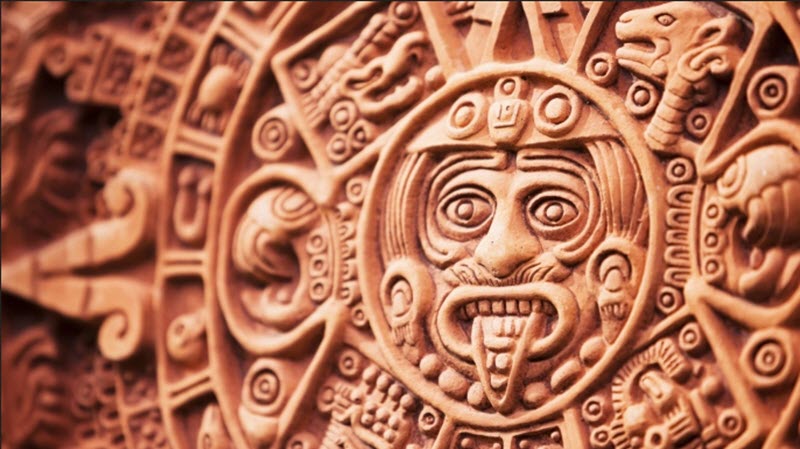In many of the pre-columbian Mesoamerican cultures, mirrors were seen as portals to a realm that could be observed but not entered. Mirrors were created and used for a variety of purposes, including divination. At the time of the Spanish conquest of mesoamerica, the Maya, Aztecs and Purépecha were all practicing a type of divination where the reflective surface of water in a bowl was used as a mirror.

Mirrors were also seen as metaphors for sacred caves, and could thus be conductors of supernatural forces. Among the Maya of the Classic period, mirrors were used to communicate with otherworldly entities and this practice has been depicted on painted ceramic vessels. These otherworldly entities were believed to owns and use mirrors too; and their mirrors were simply the far side of the earthly mirrors.
The Wixáritari (Huichol) people of the Sierra Madre Occiental range still retains a considerable body of lore regarding mirrors. According to their traditional belief system, a mirror is a supernatural portal, and some Wixáritari use circular glass mirrors in divination ceremonies. In the Wixáritari language, such a mirror is known as a nealika, a word that also means face.Symbolically, the mirror is seen as linked to the sun and moon in the sky, as well as to flowers, faces and eyes down here on earth. There are strong similarities between this belief system and that of the Teotihuacan during the Classic period.
In modern Wixáritari lore, there is a story about how the first nealika was created by a spider who spun her web across a gourd bowl.
Materials
In pre-columbian Mesoamerican art, we can see how pools of liquid are used as mirrors. This liquid was probably water most of the time, but some scholars have argued that mercury might have been used as well.
To create a mirror that didn’t rely on any liquid to produce the reflection, a single piece of iron ore was polished until it was shiny enough. This is one of the very earliest forms of mirrors known from Mesoamerica.
By the Classic period, mosaic mirrors were being produced in Mesoamerica. These mirrors were created from many ores that were put together. This way, it was possible to create large mirrors. One popular material for mosaic mirrors was pyrite. Pyrite mosaic mirros were created across large parts of Mesoamerica during the Classic period, including Teotihuacan and throughout the Maya region.
As the Classic period gives way for the post-Classic period, obsidian mirrors become more common. Obsidian is a naturally formed volcanic glass. In Mesoamerica, it is found in the volcanic regions of the Sierra Madre mountains.
Assoation with the sun
Since the Preclassic period, there has been a strong association between mirrors and the sun in Mesoamerica. This association is known from the Olmecs, and it continued with the Mayas and into our time. The Sierra Totanac people still referred to the sun as espejo sol (mirror sun) rather than just sol.
In the postclassic period, the Toltecs and Aztecs both had turquoise mirrors that represented the sun.
Association with eyes
- The Mesoamerican association between eyes and mirrors might have something to do with the fact that many of the well-known animals that live in the area – including racoons and several prominent wild cats – have eyes that reflect light.
- In several different Mesoamerican cultures, mirror stones were used to represent the eyes in sculptures.
- In Classic period Teotihuacan art, mirros are represented by a glyph that takes the form of a reptiles eye.
- In the Historia General de las Cosas de Nueva España, the Nahuatl word tezcactl refers to both a mirror and an eye.
- In the Mayan Tzotzil language, nen sat litterarly means mirror of the eye, but is used to denote the pupil of the eye.
- The ringed eyes of the rain god Tialoc may represent mirrors, but this is unclear.
Association with spiders
From the Classic period and onward, mirrors have been associated with spider webs in Mesoamerica. The network of lines present at the surface of a mosaic mirror might be the reason behind this.
